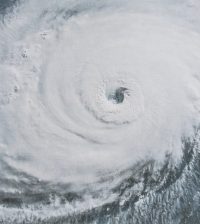- CDC Denies Milwaukee’s Request for Help on Lead in Schools
- Fisher-Price Recalls 253,000 Baby Toys Over Choking Risk
- Two Deaths in Oregon County Linked to Fatal Brain Disorder
- Home-Delivered Medical Meals Could Prevent Millions Of Hospitalizations A Year
- Cystic Fibrosis Screening Favors White Children, Report Says
- Natural Disasters Increase Cancer Risk
- ADHD Drugs Generally Safe For Heart Health, Review Says
- Cancer Screening Rates Down Among American Adults
- Menstrual Cycle Could Be Contributing To Sickle Cell Pain Events
- Total Hip Replacement Recovery: Everything You Need To Know
Wuhan Study Shows How Social Distancing Is Saving Lives

In a lesson for what can be achieved with social distancing, researchers report that school and workplace closures in Wuhan, China, reduced the number of coronavirus cases there.
And officials are extending those measures until April now instead of March, which could hold off a second wave of cases until later this year, the researchers noted.
Experts say there are vital lessons in the Wuhan experience for the United States and other countries around the world.
“The unprecedented measures the city of Wuhan has put in place to reduce social contacts in school and the workplace have helped to control the outbreak,” said study leader Kiesha Prem, from the London School of Hygiene & Tropical Medicine, in England.
“However, the city now needs to be really careful to avoid prematurely lifting physical-distancing measures, because that could lead to an earlier secondary peak in cases,” Prem warned. Instead, “if they relax the restrictions gradually, this is likely to both delay and flatten the peak,” he said.
The closures significantly delayed the peak of the epidemic in Wuhan — the epicenter of the worldwide pandemic — and gave the health system the time and opportunity to grow and respond to the crisis, according to the study authors.
The researchers used mathematical modeling to simulate the impact of either extending or relaxing current school and workplace closures in Wuhan.
The results showed that by lifting these control measures in March, a second wave of cases may occur in late August. But maintaining these restrictions until April would likely delay a second peak until October.
The study was published March 25 in The Lancet Public Health.
The researchers noted that due to uncertainties about how many people a person with the virus is likely to infect, and how long a person is infected, on average, it’s difficult to assess the actual impact of earlier lifting of school and workplace closures in Wuhan.
“Our results won’t look exactly the same in another country, because the population structure and the way people mix will be different,” said study co-author Yang Liu, also from the London School of Hygiene & Tropical Medicine.
“But we think one thing probably applies everywhere: physical-distancing measures are very useful, and we need to carefully adjust their lifting to avoid subsequent waves of infection when workers and school children return to their normal routine,” Liu said in a journal news release. “If those waves come too quickly, that could overwhelm health systems.”
The study is “crucial for policy makers everywhere,” Tim Colbourn, of University College London, wrote in an accompanying journal editorial.
“Given many countries with mounting epidemics now potentially face the first phase of lockdown, safe ways out of the situation must be identified,” he wrote. “New COVID-19 country-specific models should incorporate testing, contact tracing and localized quarantine of suspected cases as the main alternative intervention strategy to distancing lockdown measures, either at the start of the epidemic, if it is very small, or after the relaxation of lockdown conditions, if lockdown had to be imposed, to prevent health-care system overload in an already mounting epidemic.”
Just this week, President Donald Trump said he wanted to lift stringent social-distancing measures in the United States by Easter, April 12. But during a Tuesday media briefing, he said that he would listen to the advice of public health experts who are constantly analyzing data on the outbreak.
More information
The U.S. Centers for Disease Control and Prevention outlines how to protect yourself from the coronavirus.
Source: HealthDay
Copyright © 2025 HealthDay. All rights reserved.










